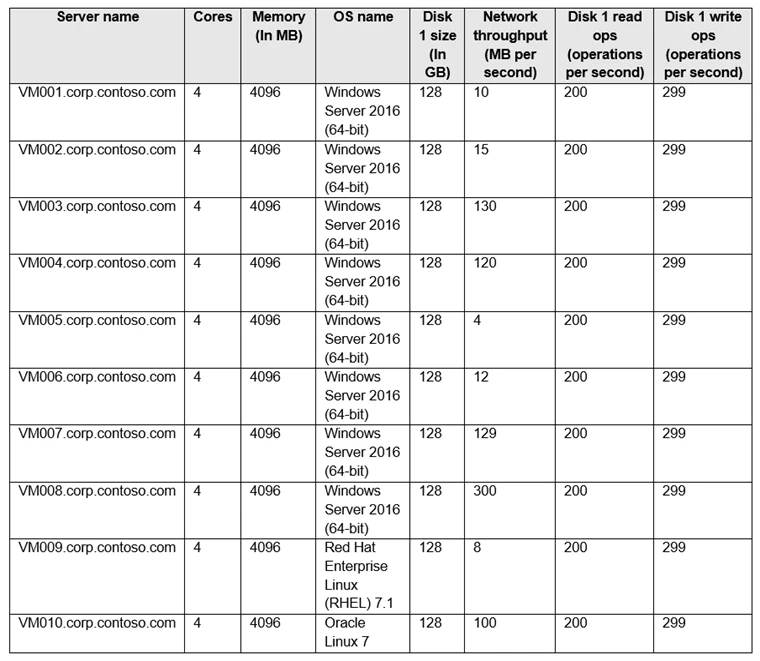You have a plan named Plan1 that has the following quota configurations for Microsoft.Compute:
✑ Maximum number of Availability Sets: 10
✑ Maximum number of virtual machines: 50
✑ Maximum number of virtual machine cores: 100
✑ Maximum number of virtual machine scale sets: 10
You link two offers named Offer1 and Offer2 to Plan1.
Two user subscriptions named Customer1 and Customer2 are created based on Offer1. A user subscription named Customer3 is created based on Offer2.
Customer1 receives a warning that it provisioned 50 virtual machines.
You need to ensure that Customer1 can provision an additional 25 virtual machines within its existing subscription. The solution must NOT affect the quotas of the other user subscriptions.
Which two actions should you perform? Each correct answer presents part of the solution.
NOTE: Each correct selection is worth one point.
To ensure that Customer1 can provision an additional 25 virtual machines within its existing subscription, you should create a new plan named NewPlan that has the maximum number of virtual machines quota set to 75, and then add NewPlan to the Customer1 user subscription. This will provide the needed resources to Customer1 without affecting the quotas of other user subscriptions.
You are migrating several Hyper-V workloads to Azure Stack Hub. Billing for the workloads is consumption-based.
You need to predict the ongoing Microsoft subscription charges for the workloads.
You run an Azure Migrate assessment and receive the output shown in the following table.

The values from which three columns affect the ongoing Microsoft subscription charges? Each correct answer presents a complete solution.
NOTE: Each correct selection is worth one point.
The ongoing Microsoft subscription charges are influenced by several factors including the storage size, compute power, and the operating system. Specifically, the Disk 1 size affects storage costs, the number of cores impacts compute costs, and the OS name is relevant because different operating systems may have different licensing costs. For instance, Windows OS typically incurs additional licensing fees compared to some Linux distributions.
User subscriptions are linked to Azure CSP subscriptions for billing reconciliation.
You need to view the usage of all the customers for the current day and the last seven days.
What should you do?
To view the usage of all customers for the current day and the last seven days in a multitenant environment provided by Azure Stack Hub services, you should query the Azure Stack Hub usage API. This API is specifically designed for retrieving usage data from Azure Stack Hub, enabling proper billing reconciliation for CSPs. It allows you to gather detailed information on the usage of resources within the Stack Hub environment, making it the appropriate choice for this requirement.
You need to create a new offer that can be used only by an operator to provision user subscriptions. The solution must simplify the process for users to create resources.
Which type of offer should you create?
To create a new offer in Azure Stack Hub that can only be used by an operator to provision user subscriptions and to simplify the process for users to create resources, you should create a private offer with a base plan only. A private offer ensures that the offer is only visible to cloud administrators (operators), thus allowing them to create subscriptions as needed. This setting is particularly useful for drafting the offer or if the administrator wants to control the creation of each user subscription.
You need to enable multitenant billing.
What should you do first?
To enable multitenant billing in Azure Stack Hub, the first step is to generate a service principal to connect the Azure Billing API to Azure Commerce. This service principal acts as a security identity used by applications, hosted services, and automated tools to access resources. Thus, it enables the integration necessary to handle billing operations.